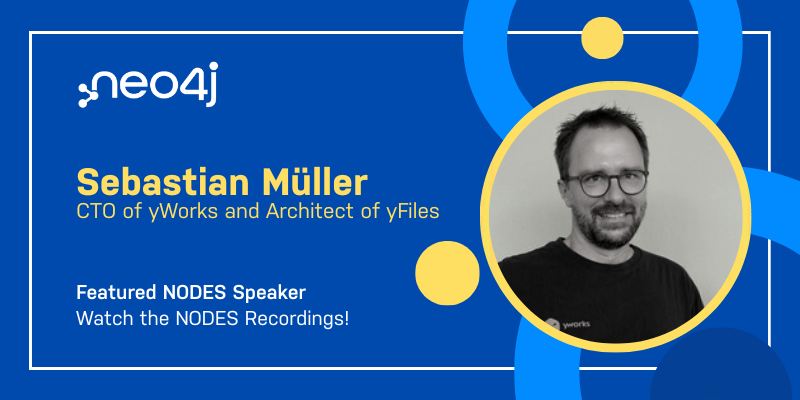This Week in Neo4j: VS Code Extension, Geospatial Data, Closeness Centrality, Project Management, and More!

Sr. Manager, Developer Community
3 min read

This week’s newsletter features tools to make your life easier using graph theory and practical applications. Top of the list is a Neo4j VS Code extension to manage connections to Neo4j instances and run Cypher queries in the IDE. You can switch your active database connection anytime, run read and write transactions, and a Cypher statement in a larger file can be highlighted and run – the extension providing debug information. Another tool you might want to check out translates CosmosDB instances to Neo4j. There’s plenty more, so dive in!
Cheers,
Yolande Poirier
P.S.: If you’re a developer building modern applications with GraphQL, don’t forget to take this short, two-minute survey. We want to hear from you!
FEATURED NODES SPEAKER: Sebastian Müller
Sebastian has spent his entire professional career on the topic of interactive graph visualization. More than 20 years ago he helped establish yWorks as the leading provider of graph visualization software development kits. Today, he is CTO of the company, leading a team of more than two dozen software developers who work on the company’s visualization SDK ‘yFiles.’ He is a developer at heart who wants to help others get into graph and diagram visualization as smoothly as possible. Connect with him on LinkedIn.
In his NODES 2022 presentation, he explores the contents of your Neo4j graph database visually, right inside your Jupyter notebooks. He creates powerful notebook scripts that connect to your graph database using Python, executes Cypher queries, and runs graph data science algorithms. Watch his talk “Explore Your Graphs Visually With Jupyter Notebooks”!

GEOSPATIAL: Spatial Search Functionality With Neo4j
In this post, William Lyon explores some techniques for working with geospatial data in Neo4j. He covers some basic spatial Cypher functions, spatial search, routing algorithms, and different methods of importing geospatial data into Neo4j.
AI: When Is the Closeness Centrality Algorithm Best Applied?
Closeness Centrality algorithms are unique because they are typically used to find nodes that can quickly interact with other nodes. Fatima Rubio, Sr. Data Scientist, examines how the algorithm works, how to use it in practice, and how to account for edge cases.
NODES SESSION: Graph Pattern Matching
ML: Conversational Artificial Intelligence With Neo4j and Unreal Engine — Part 2
DATABASE: Taking CosmosDB and Pushing to Neo4j
APP DEVELOPMENT: Run Cypher Without Leaving Your IDE With Neo4j VSCode Extension
KNOWLEDGE GRAPH: Project Management is a Graph Problem
TWEET OF THE WEEK: @ApitiusHofmann
Don’t forget to retweet, if you like it!
First prototype of the anomaly detection front end based on @neo4j technology. The graph-based approach we develop goes beyond everything done so far in the pandemic intelligence data world. @rki_de @Fraunhofer_IUK @WHO @ChanasitJonas pic.twitter.com/3OmIGTJ4xX
— Hofmann-Apitius (@ApitiusHofmann) January 18, 2023
COMING UP NEXT
-
- Discover AuraDB with Michael and Alexander on January 30, 2023.
- Neo4j Live: Crossr – Knowledge Graph Based Drug Discovery on January 31, 2023.
-
Webinar: Full Stack GraphQL Applications: Leveraging the Power of GraphQL
on January 31, 2023. -
Full Stack GraphQL Book Club, Chapter 9: Advanced GraphQL Considerations
on February 1, 2023.








